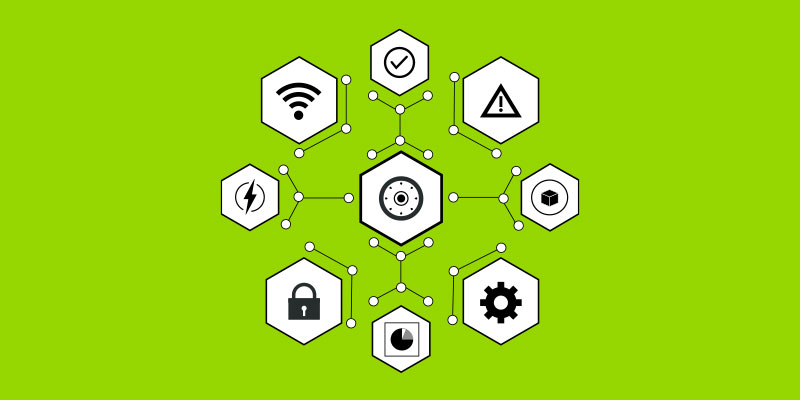We Need the Security Benefits of AI and Machine Learning Now More Than Ever

“AI and machine learning tools can absolutely help people do their jobs more
effectively now more than ever,” said Lonas. “Security professionals are
always in short supply, and now possibly unavailable or distracted with other
pressing concerns. Businesses are facing unprecedented demands on their
networks and people, so any automation is welcome and beneficial.” In machine
learning, a subset of AI, algorithms self-learn and improve their findings and
results without being explicitly programmed to do so. This means a business
deploying AI/ML is improving its threat-fighting capabilities without
allocating additional resources to the task– something that should excite
cash-strapped businesses navigating tough economic realities. Our AI/ML report
backs up Lonas’s assertion that these technologies make a welcome addition to
most business security stacks. In fact, 94 percent of respondents in our
survey reported believing that AI/ML tools make them feel more comfortable in
their role. “People who use good AI/ML tools should feel more comfortable in
their role and job,” he asserts. “Automation takes care of the easy problems,
giving them time to think strategically and look out for problems that only
humans can solve.
Licensing and roadmap update for Power BI Report Server
Since Power BI Report Server launched in June 2017, it’s been adopted by
thousands of customers in a variety of industries, giving them a way to use
and share Power BI reports on-premises. As the BI industry has evolved over
the last three years, we continue to see more and more customers choosing to
make the switch to the cloud. The availability of paginated reports in the
Power BI service enables organizations to centralize and manage their BI
workloads in one single global location – Power BI. This is why we’ve always
positioned Power BI Report Server as an on-premises solution for reporting
today, with the flexibility to move to the cloud tomorrow. As more customers
than ever take that next step in their cloud journey, we’re taking steps to
help these customers make the transition successfully. We’ve recently
updated our licensing terms to allow SQL Server Enterprise customers with
software assurance to deploy Power BI Report Server on Azure VM’s for
production use by leveraging their Azure Hybrid Benefit. For many customers,
moving their internal servers to Infrastructure as a Service (IaaS) offerings
in the cloud represent the first step in their digital transformation.
Shadow IT: Why It’s Still a Major Risk in Today’s Environments

Many organizations weren’t expecting the transition to remote work and have
found themselves needing to improvise. As a result, numerous employees are
working from home on devices that had never left the corporate environment
before this time—even laptops that were always stored in the office when they
weren’t in use. Others are being challenged to adapt their personal devices
for professional purposes for which they were never configured or intended.
For security teams seeking visibility into cloud applications across
employee-owned devices (BYOD), a full Cloud Access Security Broker (CASB)
solution is needed. This allows for real-time auditing and control of your
cloud app usage on both managed and unmanaged devices. A CASB solution will
also enable you to monitor for and restrict usage of non-corporate instances
of cloud applications, as well as to apply individual security policies on a
per-device basis. Just like water flows downhill, employees tend to gravitate
toward technologies that allow them to work in the most frictionless ways. If
there’s widespread interest in using a particular tool, it may make the most
sense to sanction—and then monitor—its usage.
Hosting Provider Hit With Largest-Ever DDoS Attack
The sheer variety of data types used in the attack, along with signs of
significant coordination, suggests a knowledgeable attacker, he says. "What
was really different is that the absolute kitchen sink was thrown in for this
attack," Barranco says. More than nine different types of traffic were used in
the attack - far more than the two or three types used in a typical attack -
and the traffic surge lasted about an hour. Most attacks are measured in
minutes, so this was notable. "It's has been a long time that we've seen the
duration that long and an attack of that size." A typical year of
denial-of-service attacks includes a massive number of smaller attacks
targeting gaming sites, often to give one player an edge over the competition,
and a few massive bandwidth attacks. Over the past 24 months, the median
denial-of-service attack has peaked at less than 250,000 packets-per-second,
according to Akamai's State of the Internet (SOTI) report. Very few attacks
have surged far beyond that average. Security firm Imperva recorded a 500
million packet-per-second attack in early 2019, for example. The attack
weathered by Akamai and its customer came close to that packet rate, but
surpassed the bandwith of that previous attack because the average packet seen
by Akamai consisted of more data.
To lead in a changed world, make yourself essential

As a leader, your new — and perhaps only — mission is to change your company
with the times. It’s clear that businesses that are essential to people’s
lives will recover faster, and those that are perceived as extraneous will
have a short runway to adapt to the new normal. But this is a moment for
leaders of all businesses to grapple with what is essential about their own
operations, processes, and products or services. Everything you do now will be
scrutinized: Is it essential or not? Companies holding out for a post–COVID-19
bounce back to things as they were will be sorely disappointed. Instead,
consider this just the beginning of shifting behavior from consumers. That
reality calls for a new kind of thinking and action from companies: Double
down on digital transformation, know what to hold, manage in shorter
increments, and plan for operational resilience. The time to stop dabbling in
digital transformation was pre–COVID-19. The difficulties of ramping up online
stores and systems for suddenly remote employees — including implementing
virtual digital tools for collaboration and product management in scattered
living rooms and on dining tables — are evident.
After Guilty Plea, DDoS Attacker Gets 5-Year Prison Term
A federal judge has sentenced an Iranian-born, U.S. naturalized citizen to
five years in prison for one in a series of distributed denial-of-service
attacks over the course of at least five years, according to the Department of
Justice. Andrew Rakhshan, 40, formerly known as Kamyar Jahanrakhshan, pleaded
guilty to one count of conspiracy to commit computer fraud in February. In
addition to the jail sentence, he was fined $520,000. Starting in 2015,
Rakhshan conducted a series of DDoS attacks against websites that had posted
legal information about his prior conviction for fraud in Canada, according to
the Justice Department. One of the sites that Rakhshan targeted with a DDoS
attack, called Leagle.com, is based in Canada but it's servers are housed in
Texas. Rahshan's guilty plea in February was in connection with the attack on
this website, prosecutors say. Rakhshan was originally arrested near Seattle
in July 2017, and the case was transferred the U.S. Attorney's Office for the
Northern District of Texas. Since his arrest, Rakhshan has remained in federal
custody, according to the Justice Department.
Robots will take 50 million jobs in the next decade.

Equally, some new opportunities might emerge to enable a smoother transition
for workers. Robotics company Universal Robots, for example, is already
deploying "cobots" (or collaborative robots) to businesses, which are designed
to simplify the use of automation for human employees. The company has
developed online courses, which it claims enable workers with no engineering
background to program a "cobot" in only 87 minutes. The method, according to
Universal Robots, reverses the idea that automation is taking jobs away from
humans, and instead gives tools to employees to better control their
day-to-day activities. Lund, for her part, is confident that the workforce
will easily acquire the new skills that it will need – in part, because it
already has. "Work skills have been evolving over the past years for many
professions," she says. "With the advent of digital technologies, this has
accelerated." "In Europe, subway train drivers have switched to becoming route
optimizers, as trains have become automated," she continued. To succeed
alongside robots in new types of work, employees will need skills that they
don't currently have. The concept of "lifelong learning" will gather pace,
therefore, as workers acquire new knowledge throughout their careers.
Cisco Brings SecureX into Full Security Lineup to Cut Complexity
The platform debuted alongside Cisco's "2020 CISO Benchmark Report," which
found many security leaders struggle with alert fatigue and other challenges
when managing a multivendor environment. Eighty-six percent use up to 20
vendors. Of those who report alert fatigue, 93% receive at least 5,000 alerts
per day and 17% report 100,000 or more alerts. Businesses with more vendors
report longer downtime, higher costs, and more breached records after a
cyberattack. It's not only security leaders who are feeling the effects.
Cisco's recently released "CIO Perspectives 2020" study found security and
complexity are the top two challenges CIOs face. More than two-thirds surveyed
feel they are being stretched too thin, Cisco researchers found. "The
challenge in the security industry is [that] we're not necessarily always
helping," says Bret Hartman, CTO of Cisco's Security Business Group. Vendors
are always creating new tools to buy and assemble, he adds, complicating the
jobs of people who manage and protect them all. SecureX, which will be
included in all Cisco Security products on June 30, is meant to simplify IT
management and reduce the complexity that CIOs and CISOs often struggle to
handle.
6 new rules of engagement for CIOs in 2020

Under these new circumstances, CIOs must be working to deliver value to
customers as fast as possible, both internally and externally. Platform
companies are always reviewing customer utilization of their products and
enhancing the experience, adding enhancements by chipping away at a backlog of
features. In this day and age, CIOs must be adopting that same mindset for
their customers. We must be reviewing and utilizing data to determine how we
can drive more change that leads to better outcomes for our customers faster.
.... The rules around work are being rewritten. As CIOs, we have the
opportunity to encourage behavior change that will ultimately help our teams
stay engaged. It can be as small as loosening up your own wardrobe choices to
signify to your teams that getting work done is more important than donning a
collared shirt, or as big as encouraging your teams to end work early on a
Friday to enjoy some recharge time. As different parts of the country and
world re-open, remember that it doesn’t necessarily mean your colleagues are
sending their children back to school or summer camp.
5 Major Software Architecture Patterns
The microkernel architecture pattern is a natural pattern for implementing
product-based applications. And a product-based application is one that is
packaged and made available for download in versions as a typical third-party
product. However, many companies also develop and release their internal
business applications like software products, complete with versions, release
notes, and pluggable features. The microkernel architecture pattern allows you
to add additional application features as plug-ins to the core application,
providing extensibility as well as feature separation and isolation. The
microkernel architecture pattern consists of two types of architecture
components: a core system and plug-in modules. Application logic is divided
between independent plug-in modules and the basic core system, providing
extensibility, flexibility, and isolation of application features and custom
processing logic. And the core system of the microkernel architecture pattern
traditionally contains only the minimal functionality required to make the
system operational.
Quote for the day:
No comments:
Post a Comment